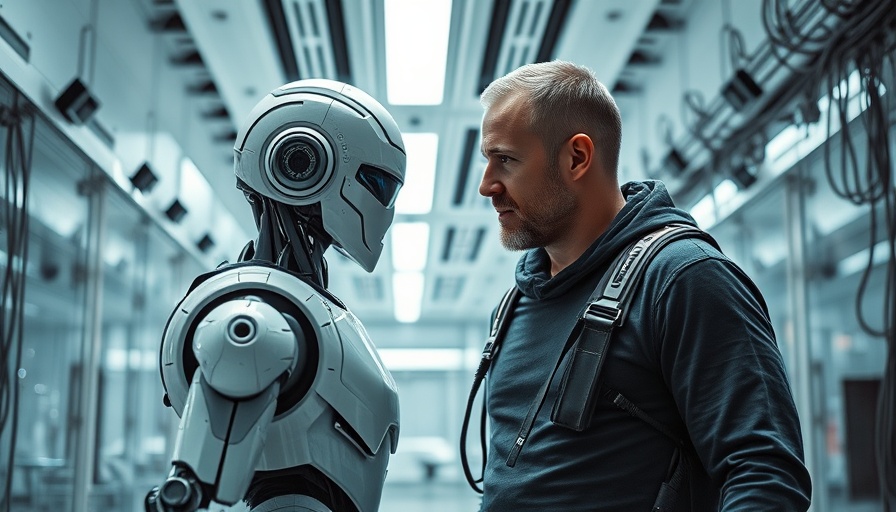
The Rising Tide of AI Competition: A Closer Look
In the ongoing discourse surrounding artificial intelligence (AI), the recent observations from Jensen Huang, CEO of Nvidia, have sparked significant interest among business owners. Huang asserts that Chinese AI companies are not just advancing; they are doing so at a rapid pace, intensifying geopolitical tensions between the U.S. and China. Understanding this competitive landscape is critical for any business seeking to leverage AI for growth and innovation.
In 'Jensen Huang Says China AI is Catching Up Fast,' the discussion dives into the increasing competition in AI technology, exploring key insights that sparked deeper analysis on our end.
China's Accelerating AI Developments
Huang's comments highlight a critical shift within the AI sector. Chinese firms are making significant strides, with companies like Huawei and Xiaomi producing chips that rival Nvidia's technology. For instance, Xiaomi's recent chip, manufactured using advanced 3-nanometer architecture, marks its return to creating proprietary technology that could redefine its market stance. This not only demonstrates the closing technological gap but emphasizes the urgent need for businesses in the U.S. to remain vigilant and proactive in their own AI strategies.
Implications of Export Controls
The complexities of international trade and geopolitical dynamics have further complicated this competitive atmosphere. Although the U.S. has enacted export controls aimed at limiting China’s access to advanced chips, such moves have backfired economically. Nvidia recently reported that these restrictions may lead to a massive revenue loss of $8 billion, showcasing how entwined the fates of American tech giants are with the booming Chinese market. This scenario exemplifies the need for businesses to adapt rapidly in response to fluctuating market conditions.
Impact on Global AI Leadership
As Huang aptly puts it, China possesses a large pool of AI researchers and a thriving market that could influence the global landscape substantially. Winning over the Chinese market means more than immediate profit; establishing a foothold there could dictate future advancements in AI technology worldwide. Businesses must approach their AI investments with a long-term view, recognizing that losing ground in this market could hamper future innovations.
Case Studies: Advancements from Deepsee
A particularly telling example of how competitive the market has become is the case of Deepsee, a Chinese AI company that launched an open-source reasoning model comparable to the best in the business, such as OpenAI's. While Deepsee's app downloads surged initially, they have since tapered off significantly. This indicates a booming yet volatile market, positioning firms must navigate carefully. Being aware of such trends is imperative for businesses looking to invest in AI technologies to ensure sustainable growth.
Middle Eastern Interests in AI
Interestingly, the global race for AI superiority is also echoed in the Middle East. Reports indicate that significant investments are being funneled into developing substantial AI data centers, such as those planned in the UAE. Companies like G42 are forming partnerships with U.S. tech firms to enhance their capabilities, showcasing a broadening of the competitive landscape beyond the traditional powers of the U.S. and China. This expansion highlights the necessity for U.S. business owners to consider international collaborations if they wish to remain at the forefront of AI innovation.
Future Predictions: Navigating the AI Landscape
As this geopolitical race unfolds, it's essential for business owners to anticipate future trends. The increasing capabilities of global AI competitors suggest that collaboration, innovation, and readiness to pivot will be crucial strategies. Business leaders should not only focus on domestic markets but look to the global landscape for potential partnerships and technological advancements.
Actionable Insights: Starting Your AI Journey
For business owners not yet embracing AI, the time to act is now. Incorporating AI into operations can streamline processes, enhance productivity, and deliver significant competitive advantages. The knowledge obtained from ongoing AI developments, like the advancements from China and the tech investments in the Middle East, can provide vital cues for strategic planning. By understanding these dynamics, businesses can align their AI initiatives with global trends, driving growth and ensuring sustainable success.
In conclusion, Jensen Huang's insights from Nvidia signal a crucial warning and an invitation for proactive engagement in the AI space. START USING AI NOW to remain competitive and leverage the opportunities that this powerful technology offers.
 Add Row
Add Row  Add
Add 




Write A Comment